Sundarbans’ honey collectors get big-time help from the Forest Department
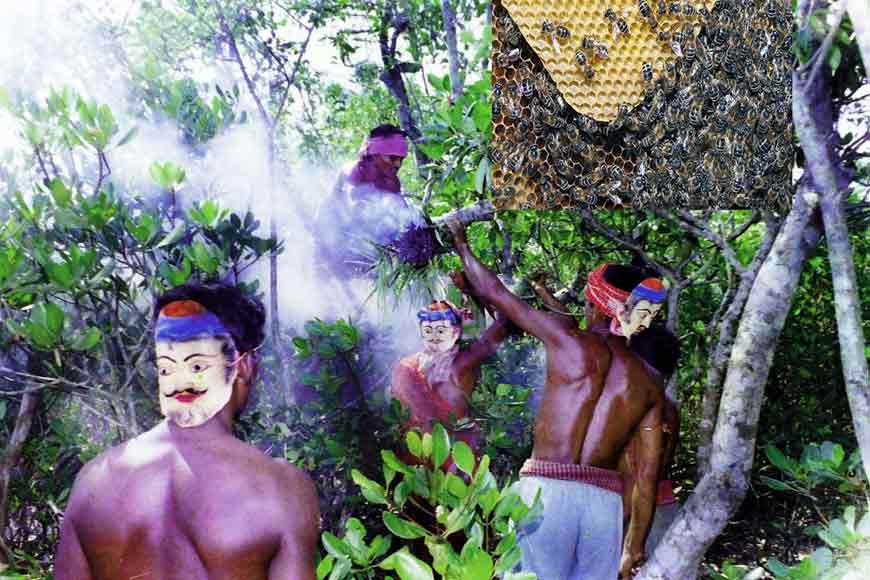
To the honey collectors of Sundarbans, Spring means more than it does to us. In this season, collectors enter into the deep mangrove forests of Sundarbans infested with Royal Bengal tigers and ghariyals to get the raw material. They carry axes, swords, tangis, ballams, or bows and arrows to protect themselves from the wild animals. They risk their lives to procure fresh honey which is eventually packed and sold in the global markets. These honey collectors are known as Moules and they often lose their lives to tiger attacks, crocodile attacks, or bites of poisonous snakes. They choose an experienced Moule from among them who leads the way through the maze-like roads of the forest.
In the previous two-three years, the demand for Sundarbans’ fresh pure honey has increased manifold. The price has increased with the increase in demand. And keeping this in mind, the Forest Department of West Bengal has taken an important step. The Forest Department declared that the price of honey will be increased from Rs 45 to Rs 70 per kg. This price will be determined according to the quantity of water mixed with honey.
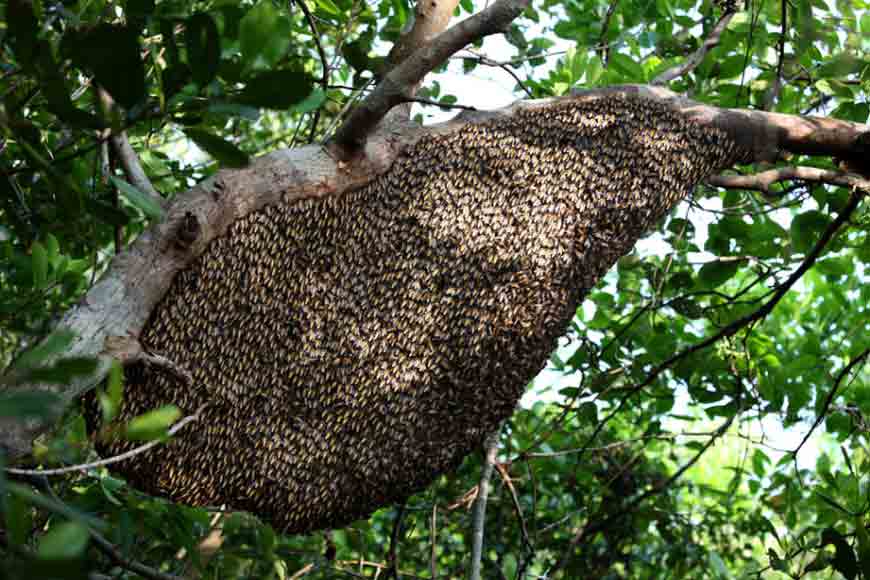
According to the Forest Department, like every other year, this year also the teams of Moules have started collecting honey since the 7th of April. About 90 teams have been permitted by the forest department to collect honey in the area adjacent to the Sundarban Tiger Reserve, each team consisting of 6 to 10 members. For the next fifteen days, they will collect honey in the various forests of Sundarbans; which will be sold to the Sajnekhali Forest Department. Compared to the previous years, the number of Moules has increased. According to studies, the absence of any major natural disasters in the last two years (after the cyclones Amphan and Yash), has resulted in the formation of numerous beehives. Even this year, the movement of the bees has already become pretty noticeable.
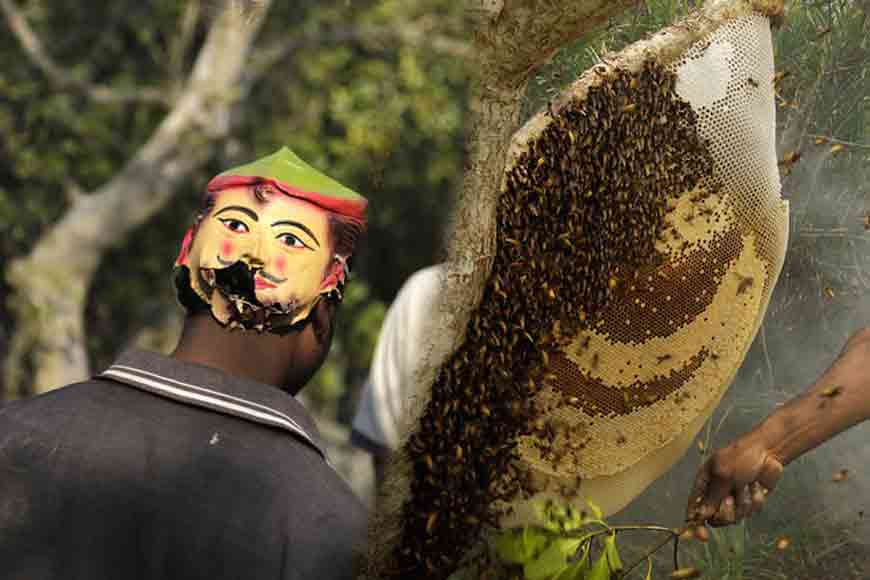
The Forest Department has provided the Moules with Boat License certificates. They have also been given important materials such as masks, collection jars, T-shirts, etc. These masks of different shapes and colours are usually worn by Moules on the back of their head so that wild animals can be scared off. Along with that, for the protection of the Maules, a special measure called “Operation Golden Honey” has been adopted. According to it, there will be a patrolling team in the area where the team of Moules will be deployed. As they move along the waterways on boats, the patrolling team will also move forward with them. If the Moules face any problem or get attacked by any animal, the patrolling team will immediately come to their aid. Other than that, there is also a facility for Janata Insurance (BLC) for every Moule, under which an amount of Rs 5 lakh has been allocated to every person.
For generations, before setting sail along the waterways the team of Moules offers prayers to Bonbibi, irrespective of the religion, and the entire village comes together to see them off.
The Moules anchor their boats beside the bank of the river and head towards the deep forest. To collect honey, they observe the movement of the bees. They look for “bhari pokas” or those who carry honey. The bees loaded with honey, fly slower in comparison to other bees. They also fly straight instead of in a zig-zag motion. An average honey bee sucks the nectar of almost 80 flowers to collect just a single drop of honey. This honey is reddish in colour and sweet but woody in taste.
Ajay Das, field director of the Sundarban Tiger Reserve told GB: “According to the system, everything is provided to the honey collectors. The honey collection starts in the first week of April and ends by the first week of May. It is conducted in two terms of 15 days each. Seven persons are deployed in one boat and in this way in the first term, 20 boats are deployed. We continuously patrol the surrounding areas of the border of Bangladesh as in the last few years they had faced dacoits and robbery. This year we were very alert and had already seized 12 Bangladeshi boats. Due to this, the problems have decreased this year. Till now, 20 metric tons of honey have been collected.”
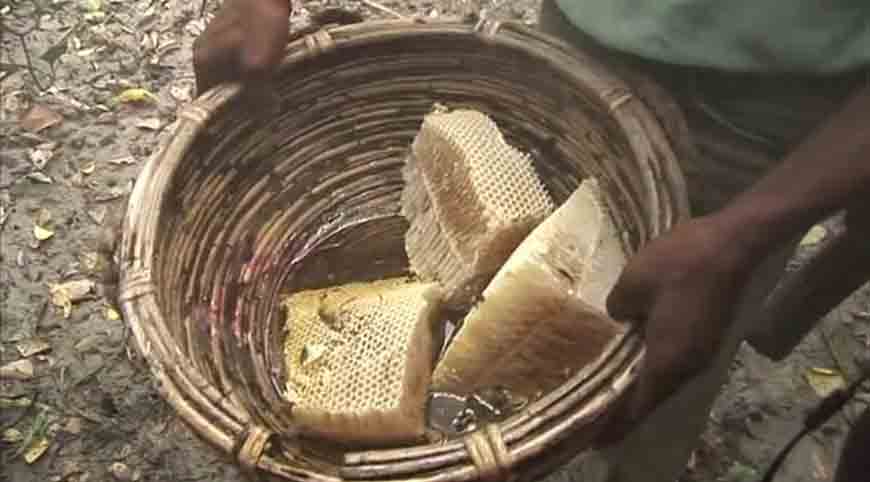
When asked how these people get protection from wild animals, Das added: “For risks of attacks from tigers or snakes, they carry smoked flames, masks, and our staff patrol the area and try to control the risks. The maximum honey collection has been made this year, compared to last year. The price depends on the moisture content. If the moisture content is below 25% then the honey is priced at Rs 250 per kg. If the moisture content is above 25% then it is priced at 225 per kg. We always try to maximize the earnings of honey collectors and maintain a schedule so that they can enter at the peak period and the collection is more as a result of which their earning increases too.”
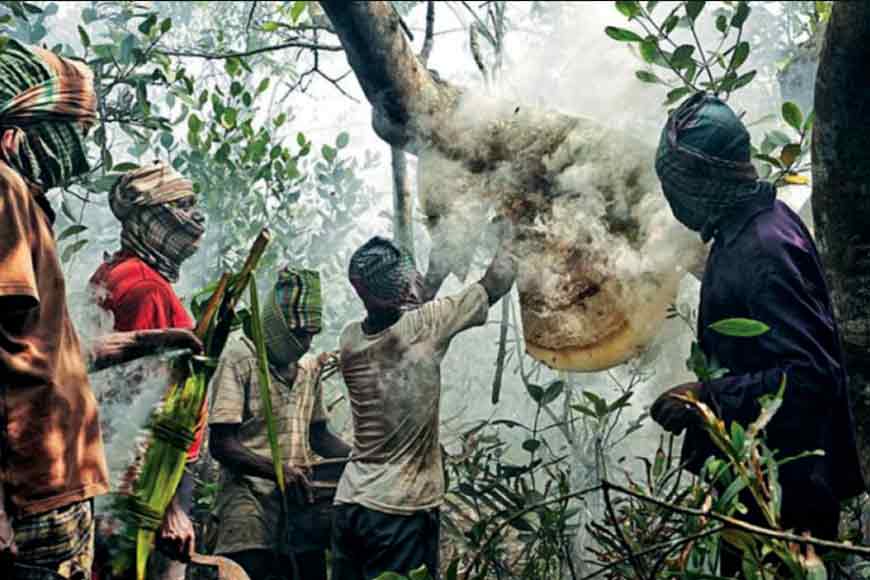
It is expected that, if these 90 teams can collect at least 10 metric tons of honey within fifteen days, they will be able to earn around 25 lakh rupees according to the current market price. The Moules will get financial relief and the respect that they deserve for executing such a tedious job.











